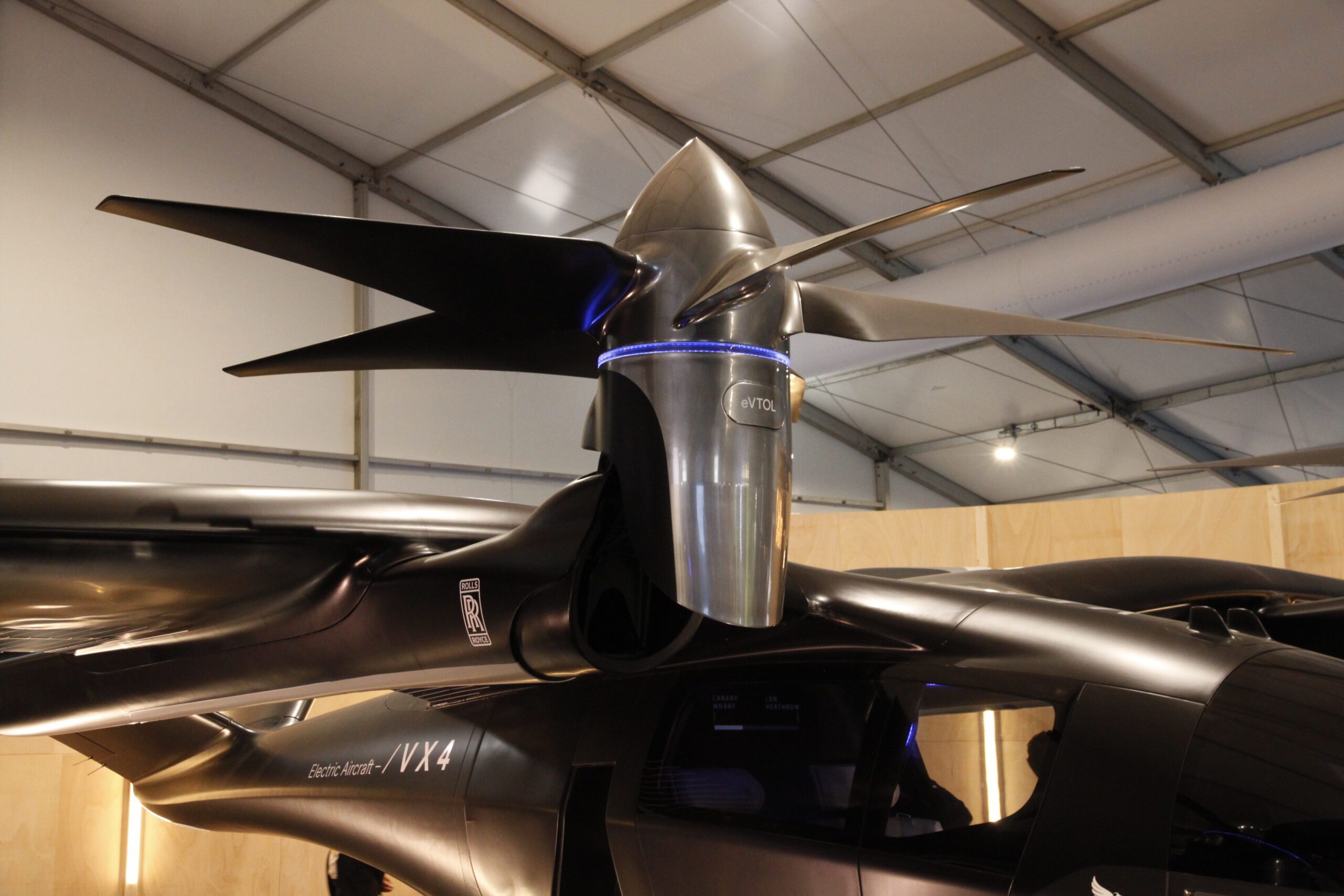
MG 7940 scaled
The August 9 incident of the Vertical Aerospace VX4 at Cotswold Airport seems to have been caused by a bonding issue within one of the propellers. The propeller was of an earlier generation that had been redesigned before the incident happened, Vertical says in an update on the test program on August 31.
Vertical has initially been very silent about the incident, in which the only flyable VX4 plunged into the ground during an uncrewed remote flight to test how the aircraft would perform outside expected operating conditions. It was reported on August 9 that the eVTOL was simulating an engine failure. This is now confirmed as Vertical says that one of the electrical propulsion units (EPU) has been intentionally disenabled
“One of the front propellers connected to a separate EPU was released. This resulted in an excessive out-of-balance load, which caused the failure of one of the supporting pylon structures. The aircraft entered a stable descent due to loss of thrust, suffering damage on contact with the ground,” the company says.
In today’s update, Vertical says it wants to be transparent and open about the incident: “During one of these test flights, an unexpected fault occurred causing the aircraft to enter a stable descent, before being damaged on impact with the ground. Vertical completed a swift and thorough investigation and submitted a report to the Air Accidents Investigation Branch (AAIB). Vertical’s investigation identified the root cause to be a fault with a propeller. This early-generation propeller had already been redesigned prior to the incident, with the issue fully resolved ahead of the next phase of testing. Further recommendations by the investigation are being implemented by Vertical,” the company says in the update.
Systems performed well during the crash
The VX4 suffered severe structural damage to the wings. During and after impact, the high voltage and battery systems performed well. Voltage, current, and power remained within acceptable limits, with cell temperatures considered normal during and after the incident. The damaged vehicle will be used for future ground tests but not be repaired to get back to an airworthy standard. The Generation 1 propeller will not be used on other VX4 prototypes, while the current propellers use a different manufacturing process.
Vertical says that the aircraft in question was planned to be retired from the test program and to be replaced by the second, updated prototype. Hence, the test program will not suffer delays.
“Supported by the learnings from the completed thrustborne campaign, the VX4 and its certification program remain on track with no changes to timelines. The assembly of a second significantly more advanced full-scale VX4 prototype is underway at GKN Aerospace’s Global Technology Centre. This demonstrator is expected to be ready to fly early next year,” says Vertical.
A third full-scale aircraft has also now been approved and is should be flying in the second half of 2024. “These upgraded full-scale aircraft’s structures and subsystems will be tested in line with certification standards. Both will require rigorous regulatory oversight, including a Permit to Fly from the UK Civil Aviation Authority, to progress to piloted flying.”
Views: 9



